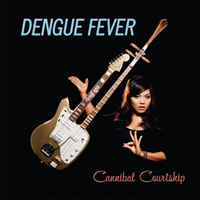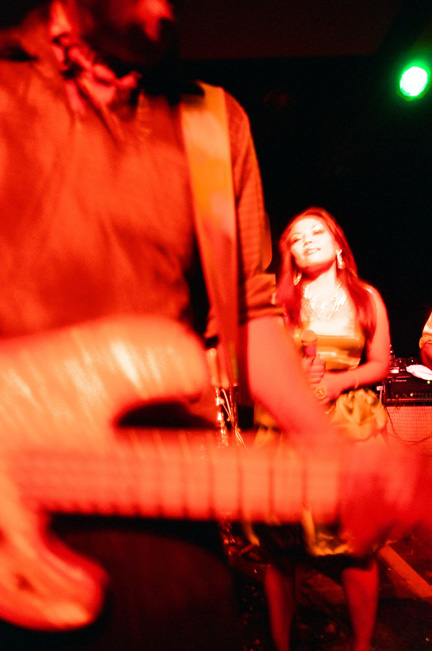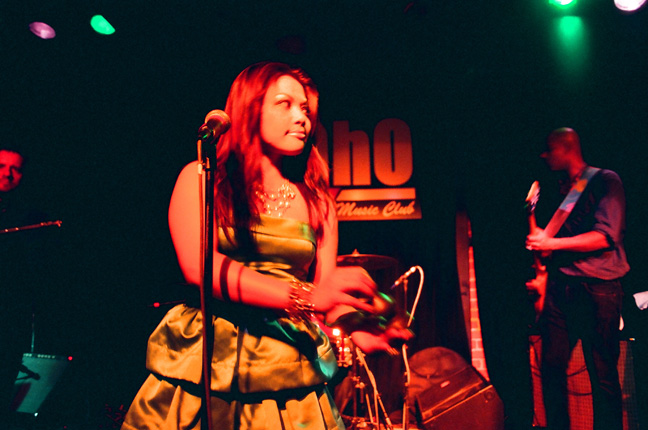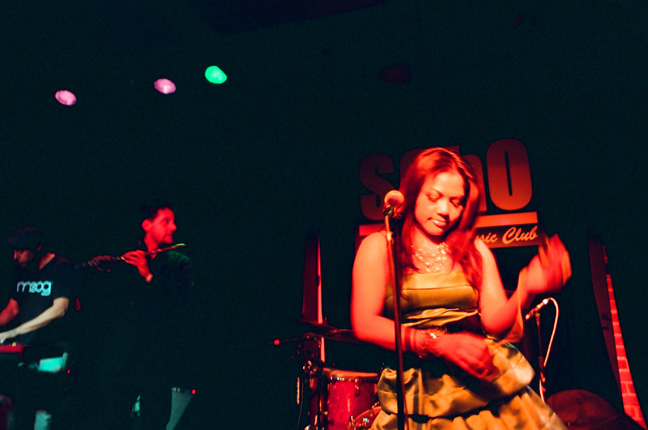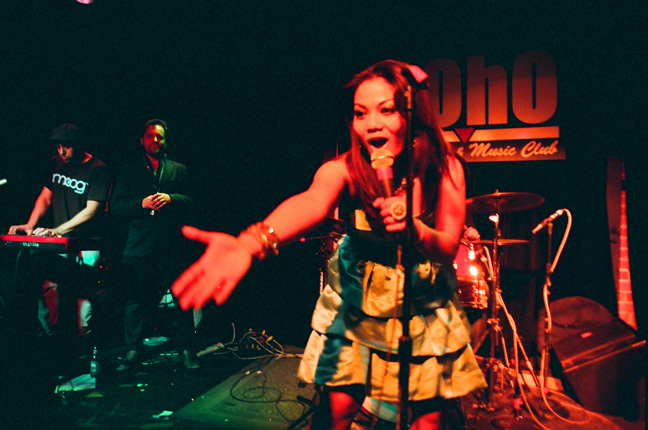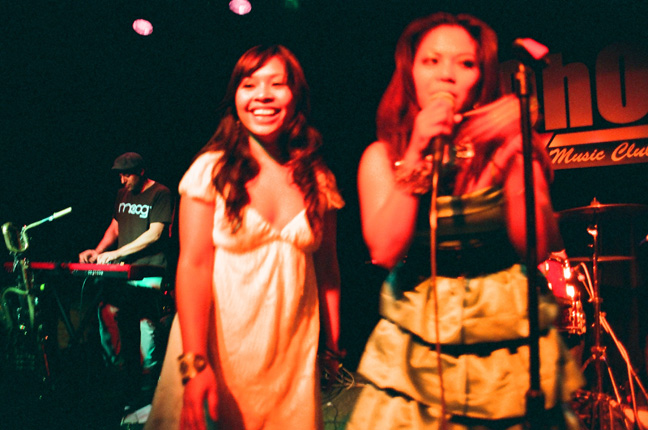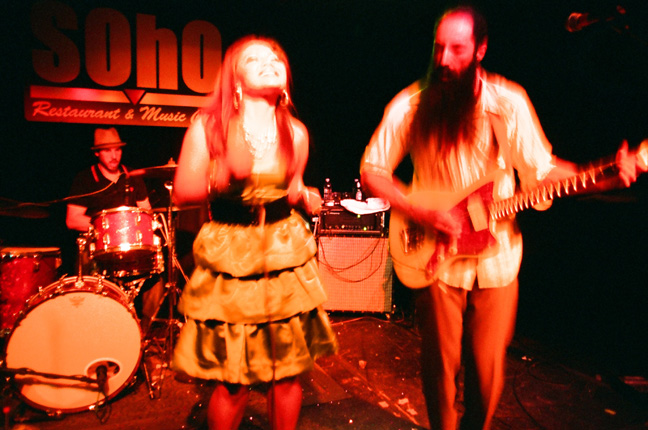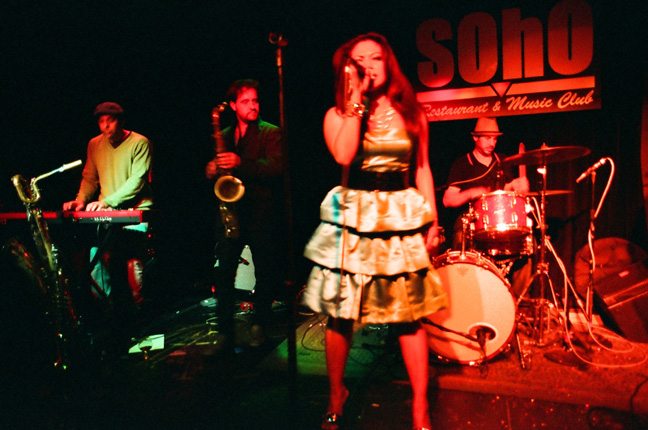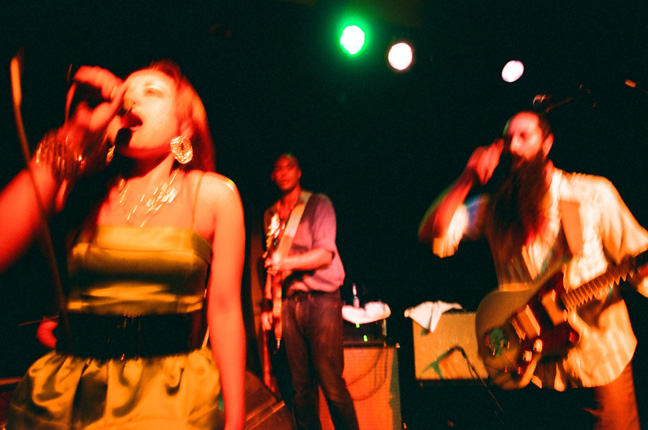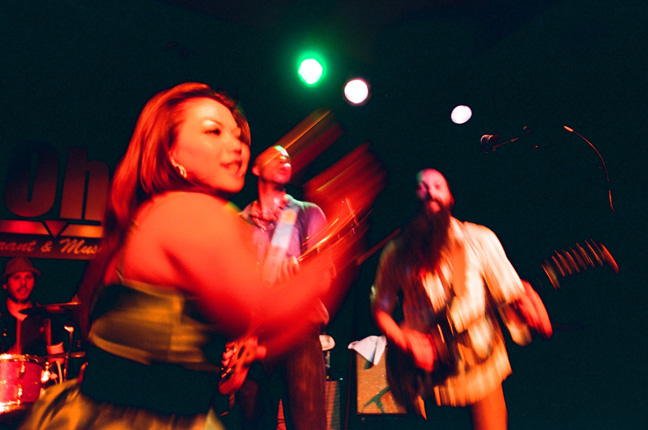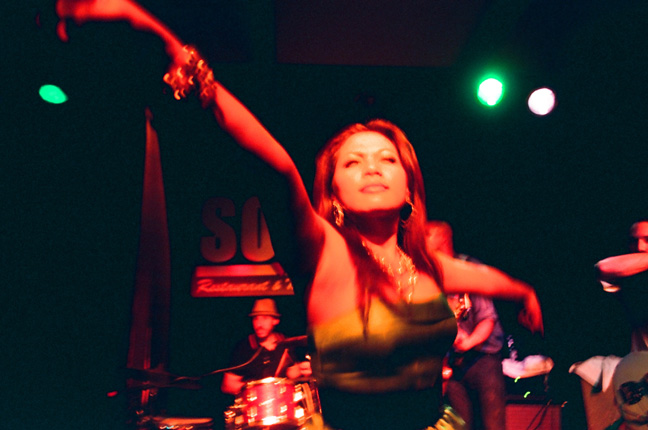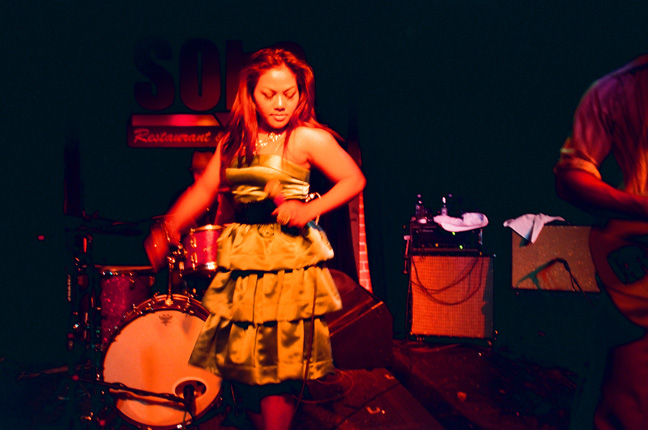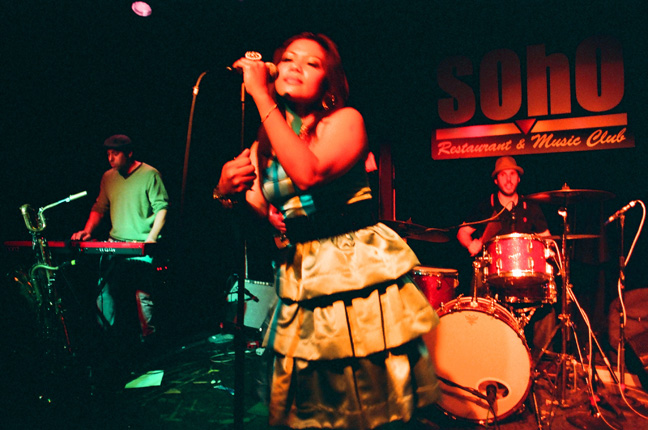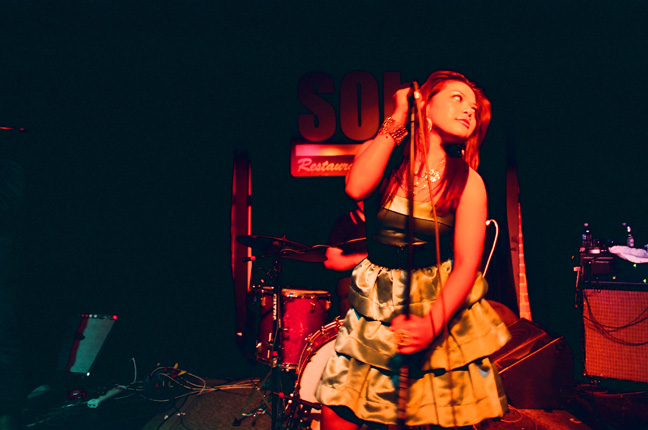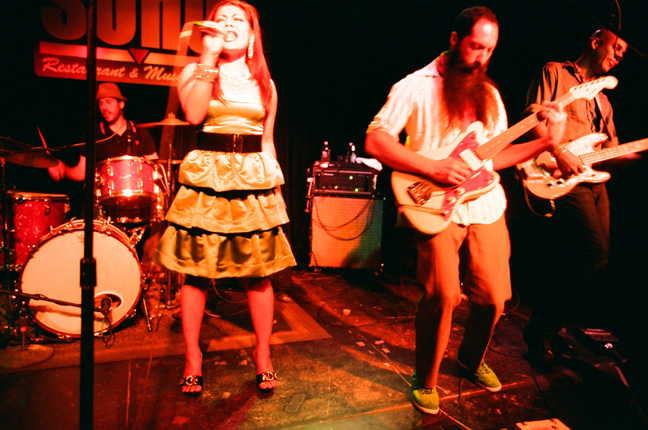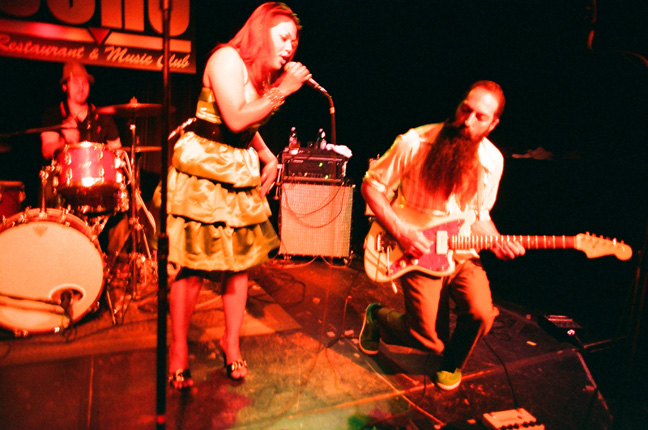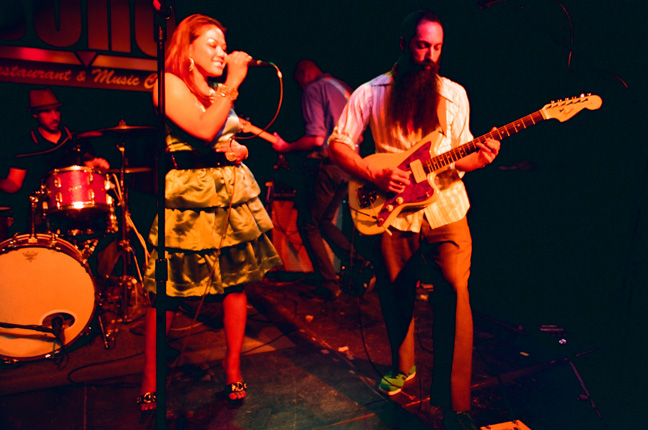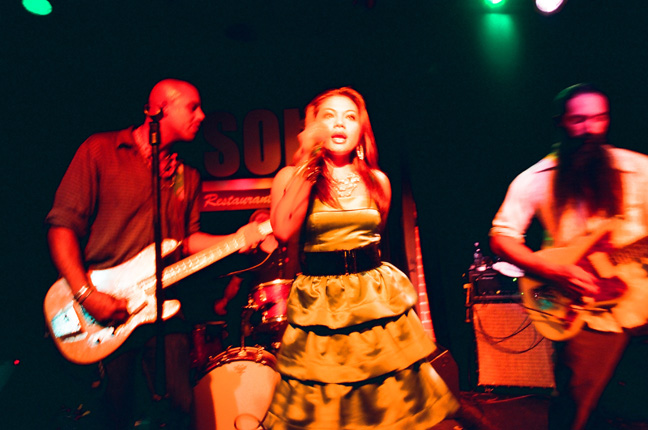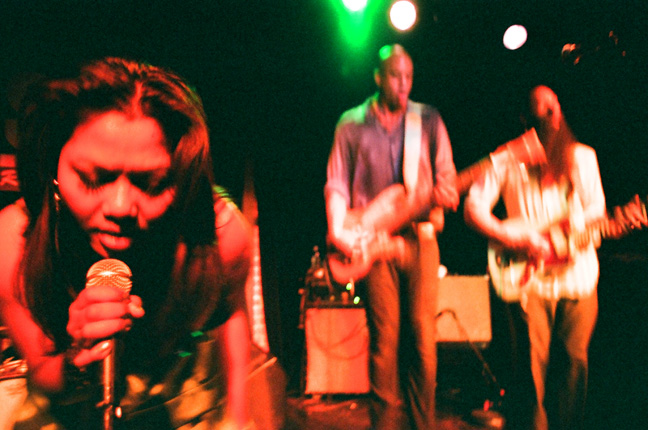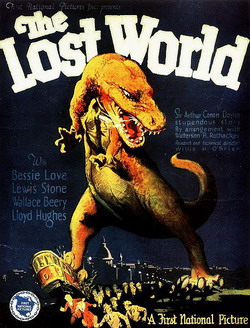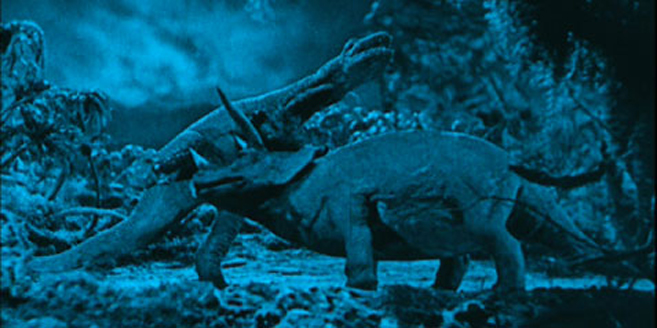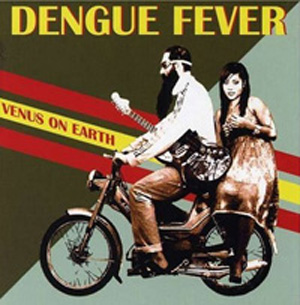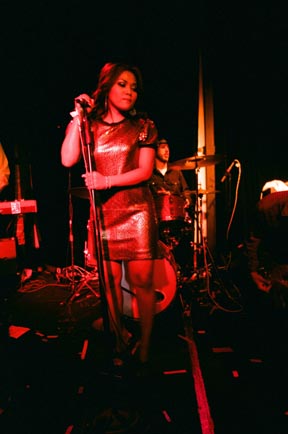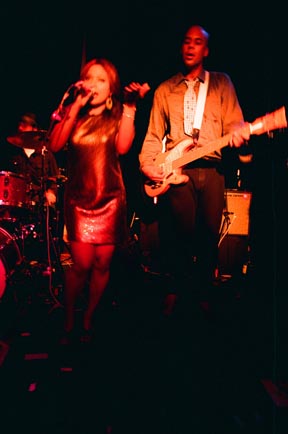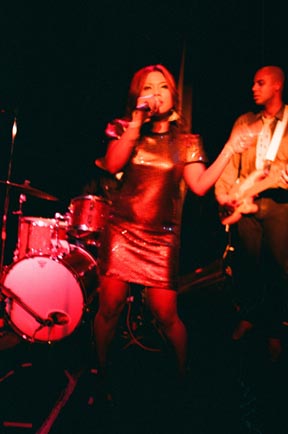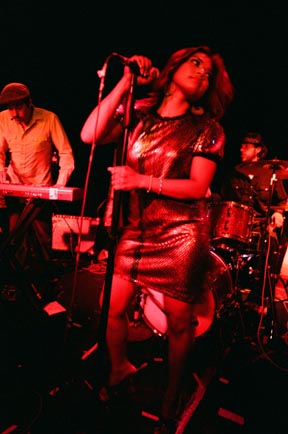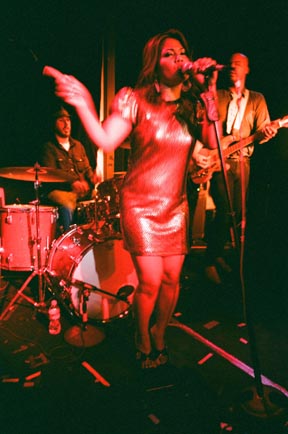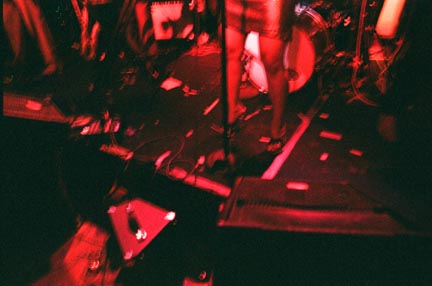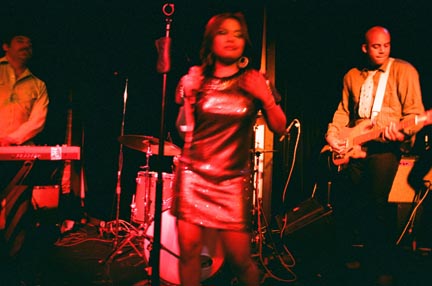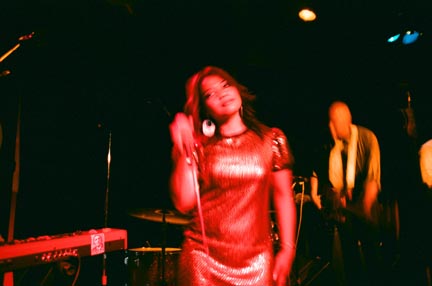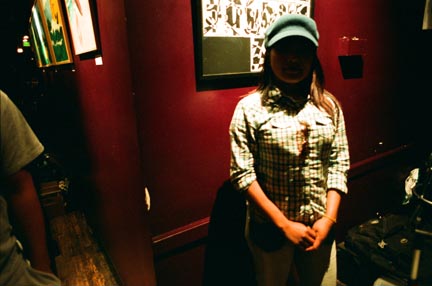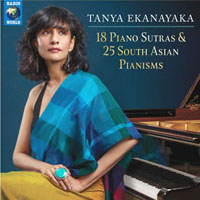
TANYA EKANAYAKA
18 PIANO SUTRAS & 25 SOUTH ASIAN PIANISMS (Naxos World)
I often put on piano music as background when I am working. It's relaxing and creates a good atmosphere, while blotting out other noises like traffic or neighbors' dogs. Since musical ideas are only held in your brain for a few seconds they kind of rinse your thoughts as they pass. However their progress keeps resolving so you find you are enjoying such a musical thread, or not. There are of course other factors, endorphins that are released when certain feelings are triggered, which is why people cling to their old records and keep hoping to relive something: the rush of excitement when they heard a certain artist for the first time, say, or had a drug experience or a sexual one and associate it with some songs. But Tanya Ekanayaka provides a new and good soundtrack to calm moments. I have played this one a few times, and occasionally think I hear a quote from Rachmaninov or Beethoven. There are in fact a lot of familiar classical echoes in here, but Miss Ekanayaka is not improvising. She writes, "every piece was precisely composed (or evolved, as I prefer to say), often over several days, and where there is an inspirational source of the motifs, it is the specific folk music of the languages referred to, not the classical repertoire. Any echoes you hear are (hopefully happy), coincidences." The languages of the titles are, many of them, in danger of becoming extinct, and Ekanayaka has used their names as triggers to musical ideas. The music has emotion, but does not take over, as for example when you are listening to a favorite album and there are key moments or touchstones where you become so emotionally involved your brain becomes focussed on it, so it moves from the unconscious to the foreground. Here I can be aware of what she doing while still reading or thinking about something else, with no disrespect to her performance. It's comforting in its familiarity without become a compulsive game of trying to recall which riffs I think I recognize. There are moments in Jazz improvisation where the performer goes to a comfortable spot but then has to extricate themself without falling into a trap. I am always interested to hear how jazz musicians get out of a maze when they accidentally fall into a familiar groove, say "El Manicero" or "A-tisket a-tasket" and wish they hadn't gone there, so in a split second have to find a quick exit. The doors they open in their subconscious can be exhilarating. So it is with Ekanayaka. For example "Kandaani" has a riff in New Orleans' style which you can hear in Professor Longhair but she quickly moves on to other pastures while you are still puzzling it out. I think I hear Ernest Gold's theme from "Exodus" in the left hand... but she assures me, "it is inspired by a Vedda song hundreds of years older than the Exodus theme you're hearing – the Veddas are the indigenous people of my homeland, Sri Lanka. 'Kandaani' means 'bees' in the Vedda language and is a celebration of the Vedda people, their way of life, and their language." So it is best to "go with the flow" and not try to overanalyze it. This work is conceived as two parts: a CD of piano sutras (the sanskrit word for threads or prayers) and another of "pianisms" combining multiple threads in parallel. This is connected to her background as a Sri Lankan, growing up with the piano and then discovering its heritage as an instrument of the colonizers, successively Portuguese, Dutch then British. Formerly we would think of this as individual pieces, maybe 6 sides of a three LP set, but instead in this new digital world it all flows together as one long mellow mood.
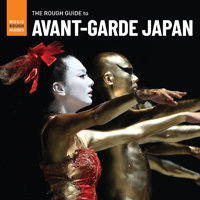
ROUGH GUIDE TO AVANT-GARDE JAPAN (RG1405)
This CD kicks off with a stunning track called "Rouge" by Michiyo Yagi that is 6 minutes of intense strumming and thrumming on a koto. It's so good I stopped the disc and went to YouTube where I found the whole tune which is twice the length! The second track has a continuous crying baby so I skipped it. The third track has squealing rock guitar behind pleasant vocals. Track four by Cockroach Eater is "experimental" which is to say it has weird vocals and odd flute over a synthesized rhythm track. It goes on too long. More weirdness invades the next instrumental track by Ken Sugai which starts simply enough and layers up to a cacophony of random-seeming noises. I feel like I am struggling in a rip-tide here as I don't like the singing of Karin or the instrumentation, though I want to give this a fair chance. I go back to YouTube figuring if I can see some of this being performed it might be more palatable; normally I prefer the opposite: purely aural stimulation without distraction, but this is beyond me. I appreciate someone (UK DJ Paul Fisher) went to great lengths to select these tracks, but I am hearing a lot of intensely discordant instruments, like the Jittyaku Orchestra of Okinawa who are actually pleasant on YouTube, if you pick the right track, but are prone to outbursts of free jazz. Well, it does say "Avant garde" on the package. More jazz follows in the form of "Akkan" by Shibusashirazu from 2004 which I enjoyed. Overall I hear influences as diverse as It's a Beautiful Day's "White bird" and Harry Partch's "Castor and Pollux" (1952) -- often in the same tune! I can follow the logic of tsuMGuito's "fPB" on guitar and koto which is the longest and best sustained piece on here; again it seems like the spirit of Harry Partch is hovering above, with Pierre Boulez and Frank Zappa on either hand. As in everything else, the Japanese are forging new directions in music and this disc covers a wide range of experimental approaches.

DENGUE FEVER
THE DEEPEST LAKE (Tuk Tuk Records)
I have to confess that when I was in college my education took a strange turn: instead of going to lectures I sat in a state of euphoria induced by my new room-mates' taste for Arabic plant extracts and the suddenly vast collection of records we shared (My collection consisted of Frank Zappa's Uncle Meat, Coltrane's Live at Birdland and Tommy by the Who). I listened to a lot of Country Joe & the Fish while staring at the plaster moulding on the ceiling. (While the US had the British invasion, we in Britain had the reciprocal psychedelic invasion.) The overall mood of this new Dengue Fever disc takes me back to those heady mis-spent days of my late teens. Now I get a lot of world fusion music pitched at me: Ethiopian jazz meets rock, New Orleans meets World Beat, African meets White Guys who Like Fela, etc. It's endless and usually tiresome. But when you come to some real professionals, like Dengue Fever, they have the white rock thing down (San Francisco psychedelia, and British Invasion) but also a great feeling for the exotic quotient that comes from the Cambodian flavor they infuse into their albums and performances. It's not just coming from Chhom Nimol their lead vocalist with her unearthly birdlike melodies, the guitar is also steeped in lush instrumentation and the percussion fits the mood from straight-up rock to African to spacey (cuica). The mood is dreamy and cinematic and you just want to lay back and go on a little mental journey. The band has been touring the world performing their music for a decade and this is the first time in almost four years they have been back into the studio to record new material. They confidently stretch out and jam on all ten new compositions, as if they had been playing them for years. Their Cambodian-rootsiness is pretty deeply engrained now with all its flowery psychedelia but their LA punk roots are still evident in the grunging guitar and the pulsing bedrock of African roots percussion. Check out the wonderful video of their first single off the album "Tokay." There's power and passion in this new disc but also a raw edge. They formed their own label and have reissued most of their back-catalog with bonus material as their sound has started to be picked up by commercials and films and become better known.
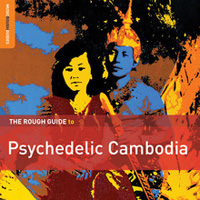
ROUGH GUIDE TO PSYCHEDELIC CAMBODIA (Rough Guide RGNET1319DD)
A few years ago this was all but forgotten music. The Khmer Rouge had systematically murdered musicians and artists and only exiles and some survivors remembered the tapes they had enjoyed in the carefree 1960s, after Cambodia's independence from France, by artists like Sinn Sisamouth, Ros Sereysothea and others who had heard the Airplane, the Fish, the Doors and other psychedelic bands on American Forces radio. Several wars later a couple of Angelenos on holiday in Cambodia found some of the old cassette tapes and decided to start a retro band that reclaimed this music. They became Dengue Fever and it is fitting they appear on here (with the English-language "Tiger Phone Card") alongside some of the originators of the sound (included songs they have covered). The high voices and speedy tempos may seem weird at first, unless you have been initiated via Bollywood soundtracks which also gobbled up these musical styles in their day. Sinn Sisamouth, who was known as the Elvis of Cambodia, wrote new lyrics for western hits like "Sugar Sugar," "Black Magic Woman," and "House of the Rising Sun" (collected here as "Thgnai kor chrer") and scored numerous hits in his homeland. Rose Seresyothea does a cover of Shocking Blue's "Venus" as "Komlos Sey Chaom," and you'll recognize the original of the next track as "Bang bang" by Nancy Sinatra! Some of these were also on the Electric Cambodia album. There is a bonus disc by Cambodian Space Project, based in Cambodia, who like Dengue Fever are a retro act, reviving the sounds of the golden age of Cambodian pop. When I reviewed the first album I said it promised much, but was still not up to the standard of Dengue Fever, however they have improved and there's a real "Weird Scenes inside the Gold Mine" vibe to "Whiskey Cambodia," a 7-minute cut on here. There are tracks that are not based on American pop songs and they are the most interesting musically, with local rhythms and percussion. "I Love only You" and "Baby Lady Boy" are among these. There is one track by Dub Addiction that is totally out of place, musically it is rubbish and doesn't relate to anything else here. Don't let that deter you though from this engaging set.
POP YEH YEH
PSYCHEDELIC ROCK FROM SINGAPORE & MALAYSIA 1964-70 (Sublime Frequencies SF 079)
I don't know how much of this I can take, therefore I can't say whether you need this, even if you are into esoteric covers of the pop of your youth. Once, around 1982, when I was teaching at UC Berkeley a couple of Asian kids showed up to my class in full-on Mod gear: RAF-roundel t-shirts, union jack jacket, parka with fur-trimmed hood. Wow! I said, you look like Mods. We are, they said. I told them, How odd, back in 1964 I was a Mod and looked a lot like you. They were gob-smacked, could not imagine their grey-haired professor with a Beatle haircut, purple velvet 'loons and a white turtleneck grooving to the Yardbirds, the Kinks and (I hate to admit it) the Dave Clark Five. To me it was equally bizarre that these young Asians identified with something so distant from their own culture. But now we learn that all through Asia there were bands in the 60s making a creditable effort of covering the Mersey sound, as well as the other Brit pop & San Francisco psychedelia that was storming the world's music charts. This compilation features late 60s Psychedelic Rock from Malaysia and Singapore with wailing backing singers, wheezy Farfisa and choppy Fender guitars. If you enjoy spotting quotes from the Surfaris (too easy), Jefferson Airplane, Los Bravos, Cliff & the Shadows, you will dig this. Hours of fun! And you must hear "Kembali lagi," by A Halim and De'Fictions, which starts with a scorching paraphrase of Jeff Beck's "Over, under, sideways, down." The same group's "Kan hilang nanti" shows that the guitarist is indeed a superb musician. To add to the fun there are also references to Bollywood songs (e.g., the lovely Zaleh Hamid's "Bertemasha," based on "Zindegi ek safar," from Andaaz) which were themselves often already one remove from Western sources. The handsome package includes two booklets packed with pictures and info.
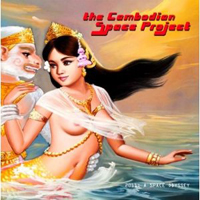
CAMBODIAN SPACE PROJECT
2011: A SPACE ODYSSEY (Metal Postcard MP30)
In their promotional literature, the Cambodian Space Project set themselves up against Dengue Fever. That was a foolish move. Surely there's room for another band that revisits the psychedelic sixties as heard through the Cambodian airwaves? You can't compete with Dengue Fever: they pioneered the field of retro-Cambodian psychedelic rock and are great at what they do. Covering the same songs is only going to lead to comparisons that the newcomers cannot sustain. I do like this new album, it's very rock and rolly. I cannot say whether the singer is a better vocalist than Nimol Chhom but the arrangements are not as far-out, more straight-ahead hard rock. Their story is the same: a singer discovered in a Karaoke bar, and a bunch of foreign rockers drafted into playing behind her. The band are French, Australian and Cambodians. They also cover songs by Ros Sereysothea, and Sin Sisamouth. Interestingly, iTunes seems to think the title of the album is "The Moon's Apsara Rides The Cosmic Golden Swan-Goose." For all CSP's claims of "authenticity," Dengue Fever is better. However as this is their first album I look forward to hearing more from the Cambodian Space Project, maybe, like Dengue, they will develop into something more than a cover band. The highlight is a novelty number that closes the short half-hour set: "Kolos Srey Chaom (Love God)" which was a hit for Ros Sereysothea and uses the music from Dutch rock-band Shocking Blue's hit, "I'm your Venus."
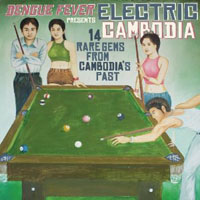
ELECTRIC CAMBODIA (Minky Records MKY1)
I bought this for two reasons: First, I like the cover. Second, I am a fan of Dengue Fever and here are the originals and more of the songs that they have immortalized on their handful of great albums, compiled by the band from cassettes. I was never into Southeast Asian music but the kitsch factor -- covers of Western pop filtered through a Cambodian sensibility -- has its appeal. However the sad truth is, the covers by Dengue Fever are much better than the originals in almost all cases. This may seem like heresy to someone who knows the music and has the originals ingrained in their consciousness (though there can't be too many of them still alive). It's in fact the opposite of the case with the Rolling Stones: the Stones started out as a cover band doing R&B. If you look about you will find a compilation called STONED ALCHEMY which presents the originals of the songs the Stones covered on their first few albums: from "Come on" by Chuck Berry to "How many more years" by Howlin Wolf to "Got my Mojo workin" by Muddy Waters, it really puts the Stones in the shade. I give the Stones credit for introducing us to such great music, but nowhere did they improve on it. But Dengue Fever are all superlative musicians and have added a new dimension to the simple pop they cover, transcending the originals. Nevertheless there are some gems in here. "I will marry you" has the guitar line of "Venus" by Shocking Blue underlying it. "Shave your beard" and "I want to shout" are familiar yet only the female vocals suggest Dengue Fever. The instrumental "hope to meet you" morphed into one of Dengue's songs. "Snaeha" is a cover of Nancy Sinatra's "Bang Bang": at once familiar and yet appropriately "Asian" in this context. Dengue's slowed-down "Flowers" shows how to turn in a pop ditty into a majestic epic. There are covers of Isley Brothers and Leslie Gore if you want to play that game. Even if you have never been to Cambodia there is some surreal nostalgic fun herein.
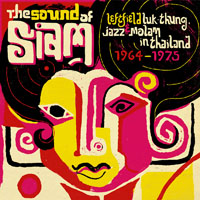
SOUND OF SIAM
Leftfield Luk Thung, Jazz and Molam from Thailand 1964 -75 (Soundways SNDW 027CD)
I thought Siam was an imaginary country, like Shangri La, where The King & I took place. Come to think of it I have been to countries that no longer exist: Yugoslavia and Zaire. BBC has started called Myanmar Burma again, and Southern Sudan is about to change, maybe back to Equatoria? I guess Siam is now Thailand. You see, readers, I am trying hard to broaden my musical horizons, but (as with Indian pop music) I am struggling with the women's voices. However the backing music has familiar psychedelic tinges, and reminds me of the late 60s American pop that pushed Fairport Convention, John Renbourn and Bert Jansch off the speakers in my college days. The music is quite far from the traditional gamelan or other classical forms that permeate South Asia but has some affinities, and because it is vintage stuff, like the ELECTRIC CAMBODIA comp, it is easier to digest retrospectively (having been pre-chewed for us). Speaking of which I never hear this type of music while eating green papaya salad or pad thai. "Fai Yen" by Ream Daranoi is the first track to grab me, because it sounds like Bollywood playback singers of the same time, though a little more "birdie" in the delivery, if that is possible. Things pick up with Panom Nopporn's bass-heavy "Sao ban pok pab" and its "exotic" oboe. "Ding ding dong" is a track that you will love or it will drive you bats. It's about what we all live for -- and is a reference to an obscure Italian caveman sex comedy of the 70s!! Even wierder is "Sao lam Plearn" a remake of "Jumpin Jack Flash" with a theramin-like organ lead. It is beyond bizarre.
